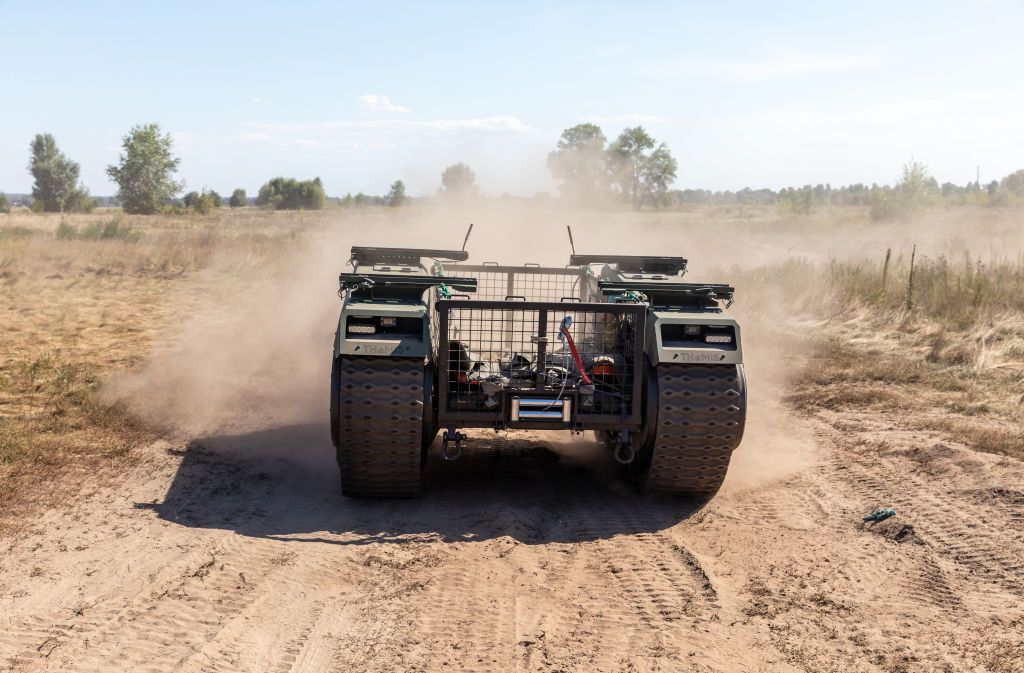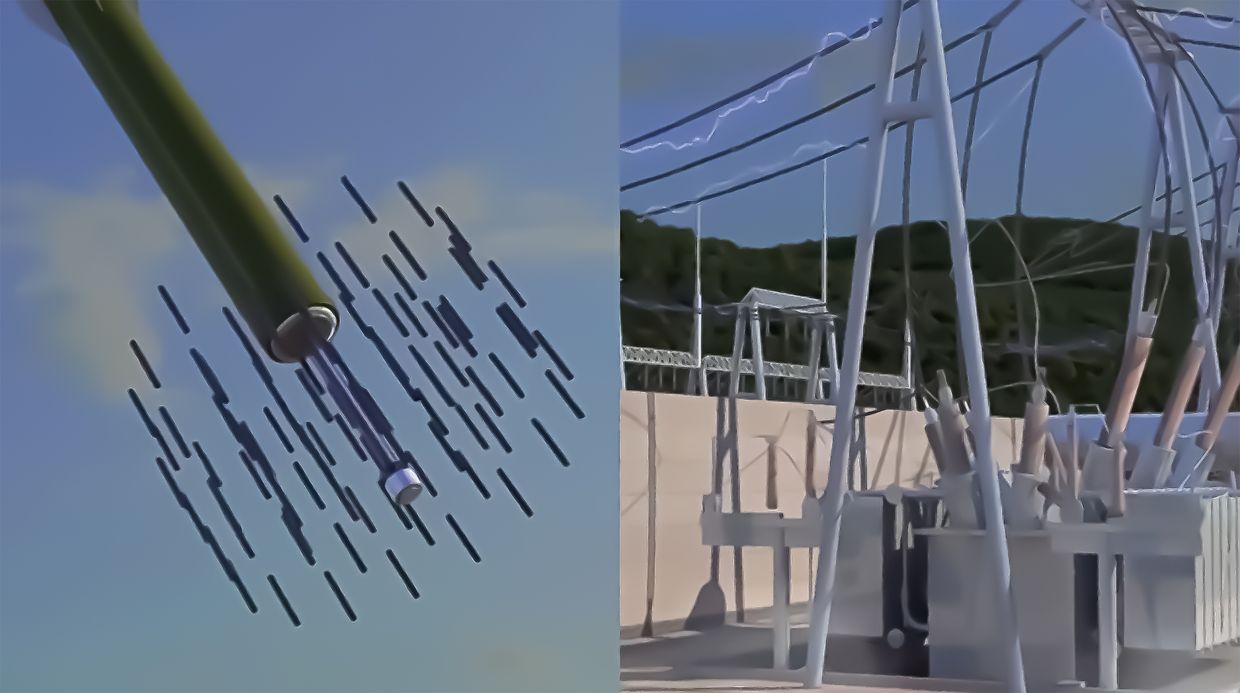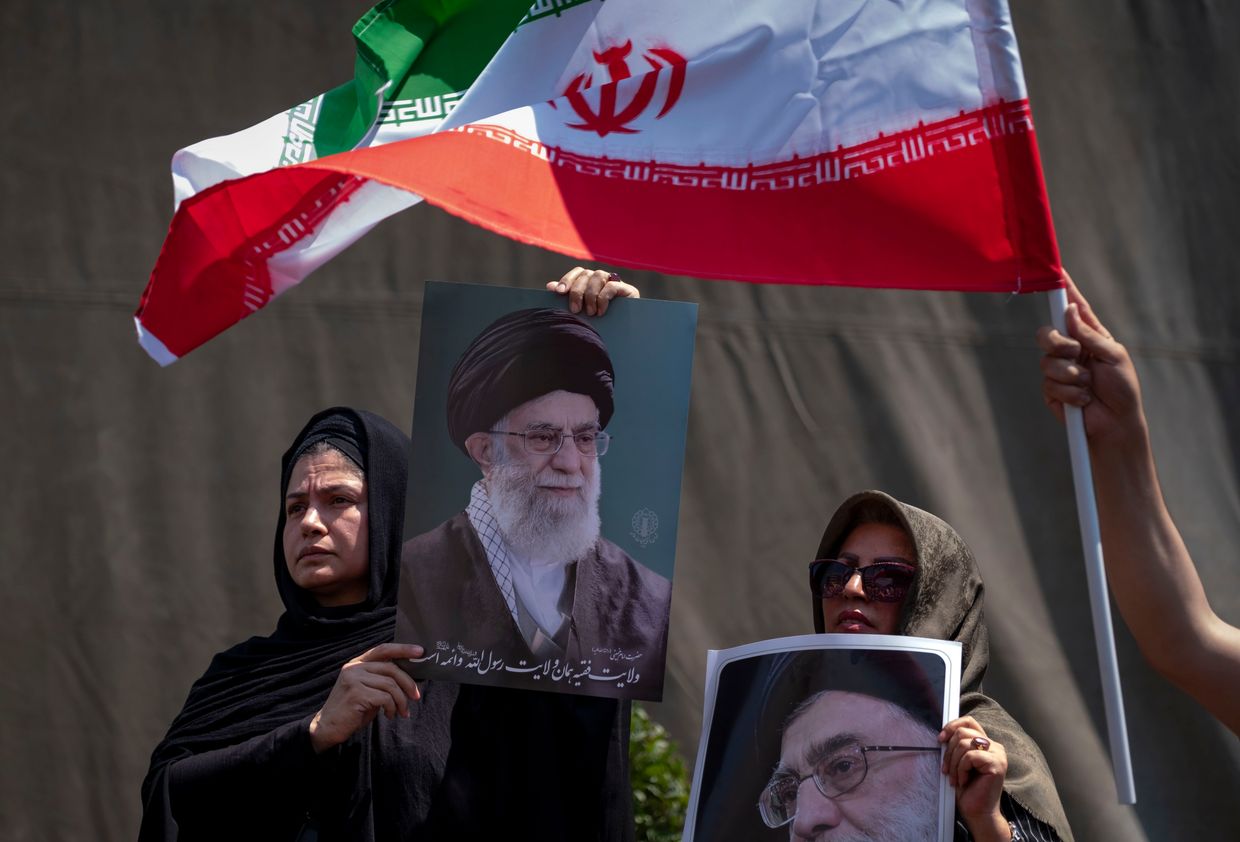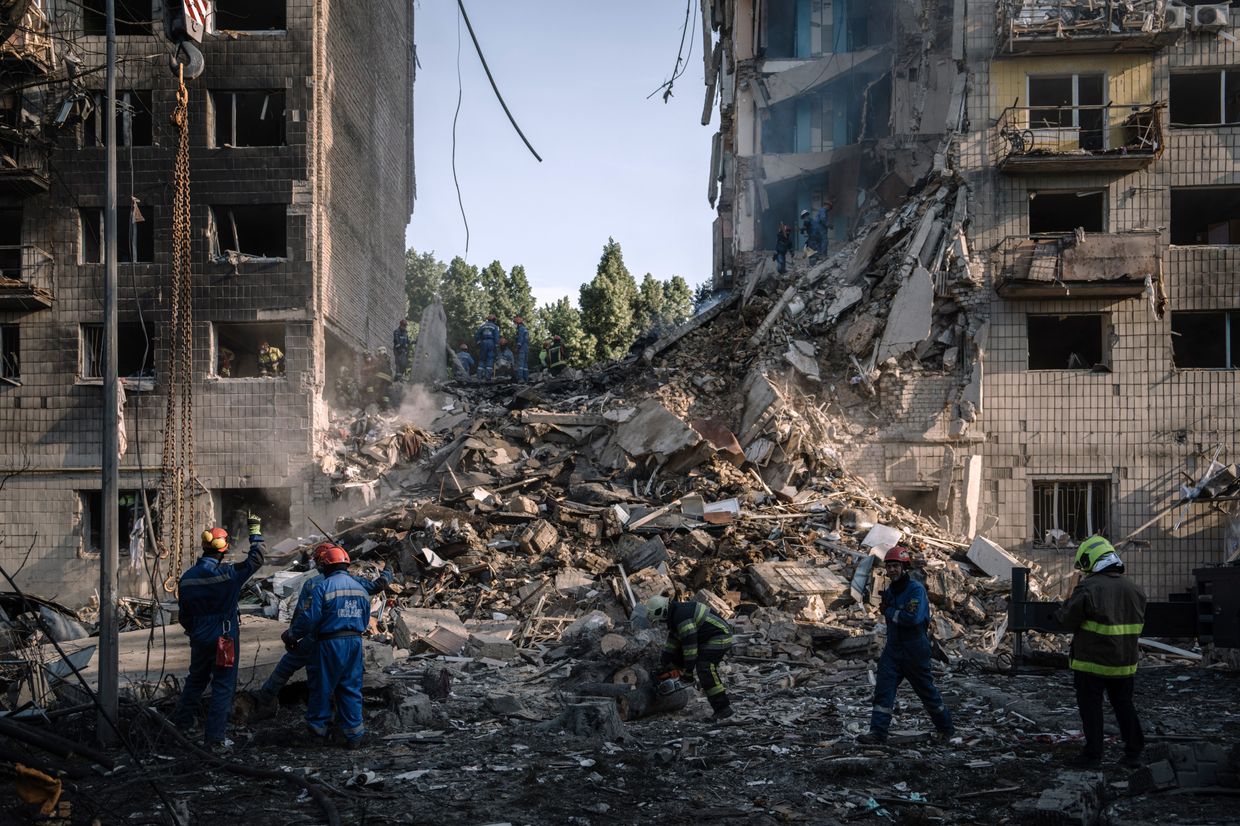In March 2022 right after the start of Russia’s full-scale invasion, a cell phone video apparently taken by a Russian soldier captured two “Zemledeliye” mobile mine-laying systems thought to be stationed in Kharkiv Oblast.
Positioned against a drab backdrop of what was once farmland, the “Zemledeliyes,” a word that means “agriculture” in Russian, could, on a very gloomy day, be mistaken for farm equipment. And indeed, these machines have been brought to “sow” Ukrainian fields.
A second into the video, the mine-laying systems begin firing. They are quickly engulfed in smoke, the launcher swallowed up so completely that even its silhouette vanishes. Deep in the billowing cloud, flashes of white light keep time with the ignition of each 122mm rocket as it screeches skywards. The landscape is engulfed as the launchers settle into their keening, mechanical rhythm.
In one minute and 13 seconds, all 100 rockets have been spent. Each rocket, fully loaded, carries 312 PFM-1 “Butterfly” anti-personnel mines. The mines are green or olive in color, and recognizable by their distinctive shape, similar to the “propellor” seeds that spiral down from maple, ash, and sycamore trees.
They are exceptionally small and light: just five inches end-to-end with plastic shells and only 40 grams of explosive per “Butterfly.”
Somewhere between five and fifteen kilometers away — the launchers’ optimal range — around 31,200 landmines are spinning to Earth. In less than a minute, the two mine launchers have knitted together a minefield in the sky and dropped it over Ukrainian soil like a net.
Forty grams of explosive in a light plastic casing is not usually enough to kill but is enough to take a foot or a hand from a fighter. After the Soviet invasion of Afghanistan, they became better known for their injurious effects on the curious children who would find them while out playing.
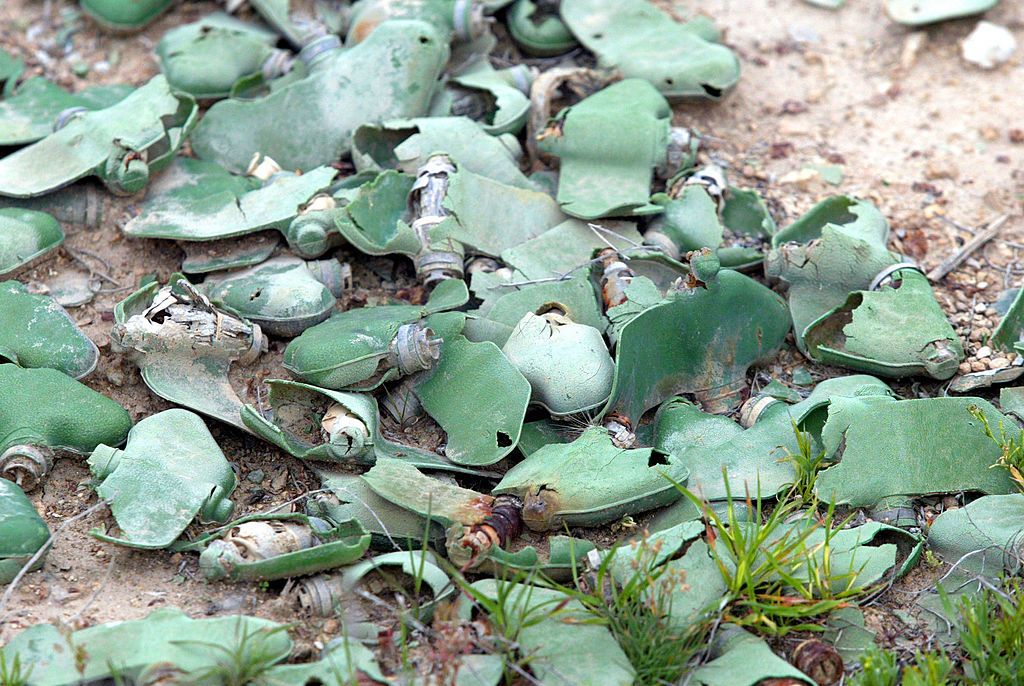
In December 2022, Human Rights Watch (HRW) confirmed that, with eerie symmetry, Russia was using both 13 models of anti-personnel and 13 models of anti-vehicle landmines in its invasion of Ukraine, and that approximately 30% of the country — an area twice the size of Austria — had been “contaminated” with mines.
Speaking to the Kyiv Independent nine months later, HRW Associate Director, Mark Hiznay, explained the near impossibility of keeping that figure current.
“We are dealing with estimates that are being drawn up in an emergency situation where hostilities are ongoing,” Hiznay explains.
Put simply: It’s hard to count landmines through a storm of bullets and shell fragments.
What is known is that Russia, at the beginning of the full-scale invasion, had a stockpile of 26 million mines —the largest in the world, according to various estimates. With one vehicle able to place 15,600 mines in a single salvo, what percentage of that number now sits buried in Ukrainian soil, gathering silt in its lakes, or floating down its rivers is impossible to assess.
Jon Cunliffe, of the Mines Advisory Group (MAG), an international humanitarian organization that not only provides modern demining technology and training to afflicted countries but also extensive education programs for their citizens via in-person training sessions and through national media, agrees, adding:
“What is the point of clearing somewhere, only to have to go back and re-clear that area again later?”
An evolving threat
Mine clearance, according to both Cunliffe and his MAG colleague, Jon Brown, is an extremely slow, painstaking process. As MAG is a humanitarian organization, it does not operate in active combat zones, but military deminers have long been priority targets for troops protecting minefields.
Since the First World War, landmines have been frequently booby-trapped and special bounties were offered for the killing of improvised explosive device (IED) specialists in Iraq and Afghanistan. However, while a team of specialists might have suffered casualties while clearing a minefield in the Second World War, that field — or at least, a path through it — was clear.
“Traditionally, the World War II mentality was that all of these mines are going to be buried by hand, in front of you, facing targets that are in close proximity. You know the targets are going to be armored vehicles so you can start putting the “dinner plates” (Hiznay’s term for the heavy, old-fashioned mines of the same shape) out in patterns that either deter someone from entering or encourage them to enter a piece of terrain,” Hiznay explains.
“(Since) the Cold War, that (ability) to place mines by rockets or by aircraft… means you’re able to now do that from 20 kilometers away.”
Further complicating humanitarian mine-clearing efforts is the sheer variety of mines that Russia is using.
There is more than just the PFM-1 “Butterfly,” historically referred to as the “green parrot.”
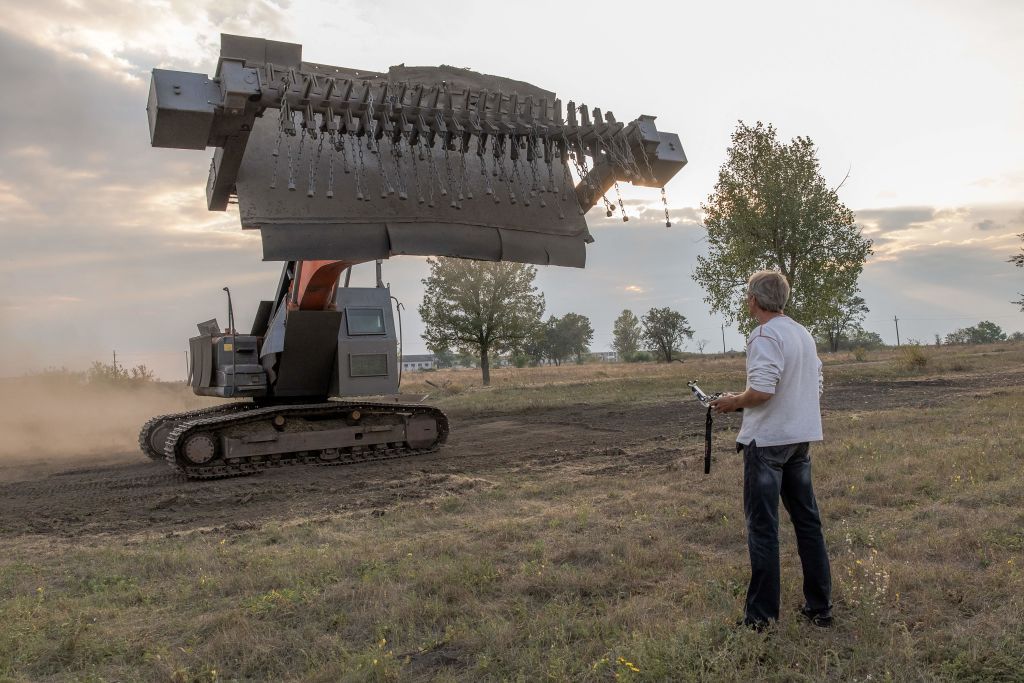
The OZM-72 — a “bounding” mine usually triggered by pressure or a tripwire that jumps (or “bounds”) a meter into the air before exploding — looks like a paint can attached to a radio antenna.
The POM-3 — probably Russia’s rarest and most expensive anti-personnel mine — modestly hides its seismic sensor and bounding explosive charge inside what could be a misplaced Thermos flask.
Simply put: landmines don’t look like landmines anymore.
“Most people (if asked to) draw a landmine, they will draw that classic landmine shape: round with a bit raised in the center,” says Cunliffe. “They will not draw the equivalent of a Butterfly. And so that is why there is such an effort in terms of explosive risk education going on.”
To date, 164 countries are signatories to the 1997 “Ottawa Treaty” (more popularly known as “the Mine Ban Treaty,”) which bans the use, production, and stockpiling of anti-personnel mines, primarily due to their lasting threat to “defenseless civilians and especially children.”
But Russia is not a signatory of the treaty. While the vast majority of countries have spent years disassembling and destroying their stockpiles of landmines, Russia’s military-industrial complex has been pouring money into R&D programs to create ever-deadlier mines that citizens of Ukraine — which signed on February 24th, 1999 — would have no earthly reason to recognize, let alone proportionately fear.
Fighting back: From dogs to drones
In Ukraine, two charities in particular - MAG and the HALO Trust - are working to educate, train, and provide for civilians and new Ukrainian demining teams. MAG provides in-person humanitarian demining training, as well as public information over radio, television, and signs posted in train cars.
But MAG can also help to provide high-tech equipment, from Hurt-Locker-style bomb suits to the so-called “MineWolf” — somewhere between a tank and a combine harvester, which can be remotely piloted through minefields, deliberately triggering devices with its thresher.
Animals with keen senses of smell also have potential parts to play —in detection, at least.
“They’ve tried it with rats, which work well in certain contexts,” says Cunliffe. “They’ve even tried training bees, to see if the bees could smell mines.
“But dogs are pretty much the standard in terms of what we’d like to see inside Ukraine.”
The Ukrainian government has said it would like to see 10,000 dog teams working in the country in 2024, consisting of one animal and one handler, according to Cunliffe.
Dogs — particularly German Shepherds, Labradors, and Belgian Malinois — were used extensively in Afghanistan as key parts of IED disposal teams. But they are expensive, and the training is time-consuming.
At the other end of the technological spectrum are Unmanned Aerial Vehicles (UAVs), also known as drones.

“The use of UAVs in survey work in particular is increasing, (as are) the different types of cameras that you can use on the drones,” Cunliffe says.
“I was watching images (in August) from thermal cameras — because in Ukraine it’s been so hot, which means that when the temperatures go down, if the mines are just under the surface you can get a very, very good thermal image of the whole minefield.”
But while charities like MAG provide equipment, education, and training — and while Ukrainians step up to reclaim their land — the danger is that the West simply doesn’t grasp the severity of the threat.
Both Hiznay’s “World War II mindset” and the specter of the IED from its most recent wars in Iraq and Afghanistan have obscured the facts that landmines don’t “look like” landmines anymore and are spread out in huge numbers across vast swaths of territories.
The longer the war continues, the longer the Russian presence will haunt Ukraine after the shooting stops.
Hidden in its fields, underneath the snow, in the ruins of the cities the West has pledged to rebuild, the mines will lie in wait for Ukrainians returning home, and for the generations who follow them.
